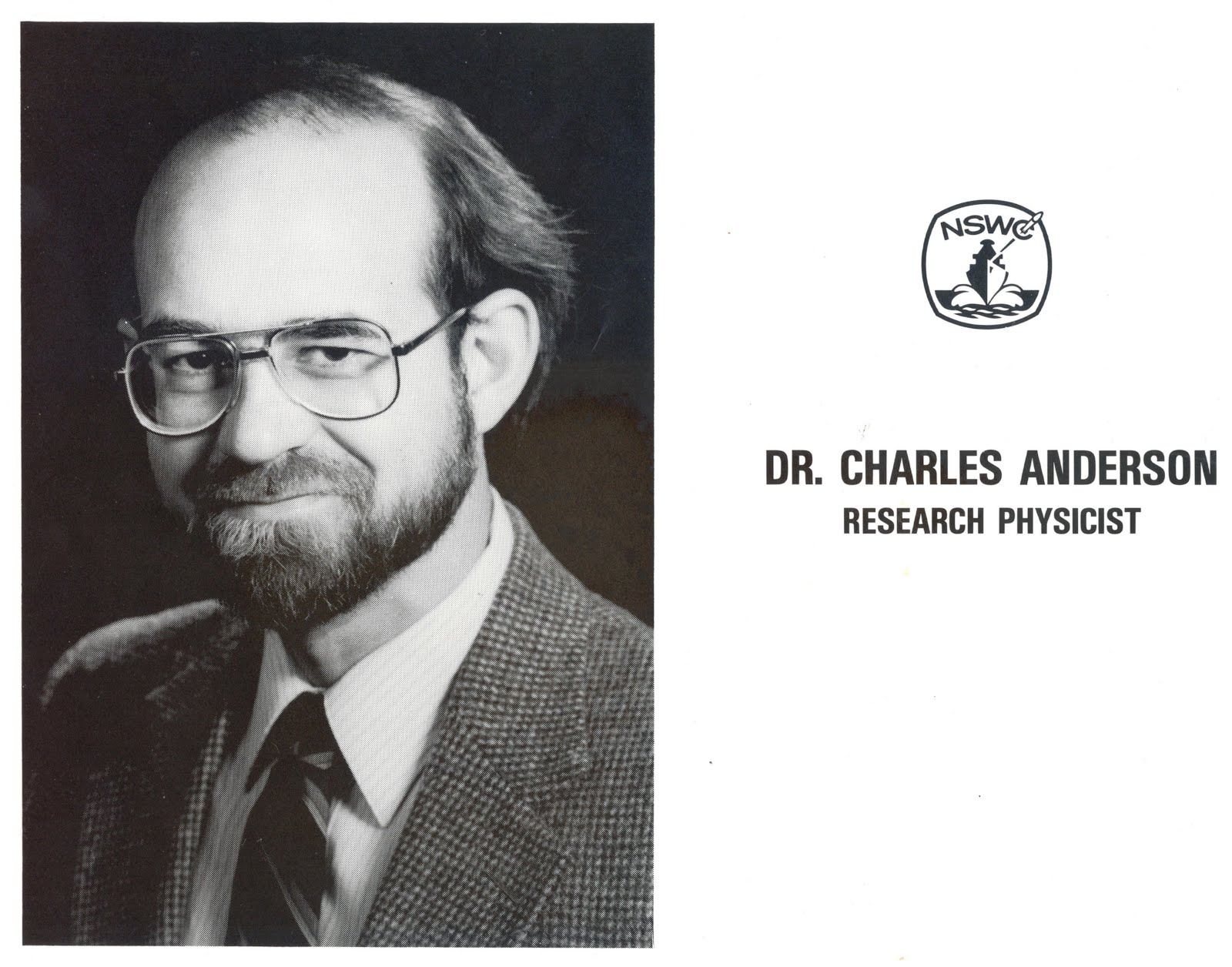According to this federal government story, infrared radiation emitted by our atmosphere provides a surface warming power flux of 340.3 W/m2 compared to 163.3 W/m2 of radiation (UV, visible light, and infrared) directly absorbed from the sun. In the official pronouncements of the United States of America federal government, so-called back radiation from our cooler atmosphere provides 2.084 times as much heat to the warmer surface as does the sun directly.
In this viewpoint, commonly claimed to be the consensus viewpoint of 97% of all scientists, the Earth does not have a gravitational field which acts upon air to to provide a temperature gradient in accordance with simple physics which has been well-known for a very long time. This article will explain this very simple, well-known, yet now completely ignored physics in relatively simple terms. If one is to understand the equilibrium climate of the Earth's surface and its lower atmosphere, the troposphere, that understanding requires that we understand how gravity acts upon our atmosphere.
Yet we cannot ignore the role of radiation in developing this understanding either. Let me reprise some considerations from my earlier article The Simple Physics Explaining the Earth's Surface Temperature by way of introduction.
NASA says that the Earth emits 239.9 W/m2 of longwave infrared radiation into space. This implies an effective Earth system radiative temperature T:
P = 239.9 W/m2 = σ T4 = (5.6697 x 10-8 W/m2K4) T4,
Now we can go a step further, since NASA says that 40.1 W/m2 of longwave infra-red radiation emitted from the surface passes through the atmospheric window without absorption by the atmosphere directly into space. This allows us to calculate the effective radiative temperature of the atmosphere alone. Consequently, the effective radiative temperature of the atmosphere as a black body is found to be:
This effective atmospheric temperature is important because it is at an altitude at which the atmosphere is in equilibrium with radiation into it and out of it with respect to space. This is an effectively pinned temperature in our atmosphere from the standpoint of radiation. Changes in the water vapor concentration and those of other infrared-active gases may move this point somewhat, but there is such a point given any such changes in infrared-active molecule concentrations which serves as a reference point for an equilibrium temperature of the atmosphere as seen from space. Where this altitude is is mostly determined by water vapor in the atmosphere.
According to the U.S. Standard Atmosphere Table of 1976, the average air molecule has a mass of 0.028964 kg/mol. So the kinetic energy difference of one mole of air molecules at the surface and at an altitude of 6846 m is
KE (h=0) - KE (h = 6846m) = (0.028964 kg/mol) (66992.2 m2/s2 ) = 1940.36 J/mol
The heat capacity at constant pressure for a mole of the average air molecule is 29.07 J/K mol. So we have
T(h=0) - T(h=6846 m) = (1940.36 J/mol) / (29.07 J/K mol) = 66.75K
This is a temperature gradient per km of altitude of 9.75 K/km, which is a bit less than the more frequently given 9.8 K/km because we took into consideration the fact that the gravitational constant is not really quite constant and decreases slightly with altitude.
The actual temperature gradient with altitude is smaller than the 9.75 K/km lapse rate due to gravity. This is because that measured lapse rate is reduced from this value dictated by gravity and the average mass of an air molecule by many cooling mechanisms such as the evaporation/condensation cycle of water and radiative cooling. What I intend to extract here is the effect gravity has on the lapse rate and on the surface temperature.
Now comes the important lesson of this exercise. We can now calculate the equilibrium surface temperature of the Earth due to the temperature gradient in the troposphere resulting from gravity acting on the atmosphere. Recall that at 6846 m altitude, the temperature interpolated from the US Standard Atmosphere Table of 1976 is 243.7 K. With a gravitational temperature gradient of 9.75 K/km, the surface temperature is
T (h=0) = 243.7K + (6.846 km) ( 9.75 K/km) = 310.4 K
The air temperature at the bottom of the atmosphere, where the molecules of the atmosphere are bombarding the surface, should be about 310 K were it not for the existence of cooling effects. This is much higher than the 288 K average temperature of the Earth's surface.
In fact, given that the surface is said in the Earth Energy Budget above to be absorbing 163.3 W/m2 of direct radiation from the sun, the surface should be much hotter than 310 K. The problem is still greater if the surface is also warmed by back radiation from the atmosphere of 340.3 W/m2 , despite the exaggerated surface infrared emissions of 398.2 W/m2 of that energy budget. I discussed why the surface infrared emissions are greatly exaggerated recently in Infrared Radiation from the Earth's Surface and the So-Called Scientific Consensus. The claim of a large back radiation from the atmosphere was needed because even without an exaggerated cooling by radiation of the surface, there was no way to achieve an average temperature of 288 K at the surface without the gravitational effect being taken into account.
It is important to understand that under equilibrium conditions, the gravitational field is not transferring heat through the atmosphere or to the surface. The gravitational field effect on the temperature of the atmosphere is trying to stabilize the temperature gradient in the atmosphere and at the surface and heat transfer only occurs when heat transferring effects such as radiation, water evaporation and condensation, and thermals upset the balance. In this sense, the gravitational field effect does not belong in the Earth Energy Budget. But, the fact that it does not belong there points out that the Earth Energy Budget is inadequate to understand equilibrium temperatures and is actually misleading.
While it is wrong to think of the gravitational effect as a power input in the system, it is still instructive for the sake of comparison to those factors that do put power into the Earth system to calculate its effective power input. Using the Stefan-Boltzmann equation this would be given as
P = σ T4 = (5.6697 x 10-8 W/m2K4) (310.4 K)4 = 526.3 W/m2
If one adds to this the 163.3 W/m2 of direct solar radiation and subtracts the 18.4 W/m2 of cooling thermals and the 86.4 W/m2 of cooling water evaporation power, the Earth's surface temperature would be given by
The net radiation from the surface is another cooling mechanism, which according to NASA is (398.2 - 340.3)W/m2 = 57.9 W/m2 . If we subtract this power from the 584.8 W/m2 , we get 526.9 W/m2 for the effective surface power emission given these inputs and outputs. So,
P = 526.9 W/m2 = σ T4 = (5.6697 x 10-8 W/m2K4) T4,
and T = 310.5 K.
This temperature is almost exactly the same as the temperature calculated from the effect of gravity alone, which is to be expected because the heat flows into and out of the surface in the NASA scheme were equal.
I do not trust the NASA value for the net cooling by radiation of the surface, which is given as 57.9 W/m2 in their scheme at all. I do believe that they can measure the 40.1 W/m2 of surface radiation through the atmospheric window into space. I also believe that this implies an actual surface emission about three times that amount. Furthermore, there is no back radiation in the equilibrium condition, though given that the atmosphere is often not in equilibrium, there are times when the air is warmer than the surface, so there is an average low value of back radiation. I do not have a decent number for the back radiation, but it is much smaller than the heat loss by thermals, given by NASA as 18.4 W/m2 . Therefore, I will ignore back radiation as being in the noise. Taking net surface radiation as about 120 W/m2 then instead of 57.9W/m2 , we get a surface temperature of
P = 464.8 W/m2 = σ T4 = (5.6697 x 10-8 W/m2K4) T4,
and T = 300.9 K.
Consequently, with a more realistic surface radiation cooling, the surface temperature is still about 12.9 K too warm. Another 74.7 W/m2 of cooling is still missing. Most of this is certainly due to underestimating the cooling effects of thermals and water evaporation.
Already, one should be able to see that the only way to support the idea that infrared-active gases are alone warming the surface is to believe in the reality of the 340.3 W/m2 of back radiation shown in the diagram. This back radiation requires that a black body radiator be at a temperature of 278.34 K, which in the U.S. Standard Atmosphere Table of 1976 occurs at an altitude of 1510 m. The infrared radiation from such a black body would have to travel 1510 m to reach the surface without any absorption by the infrared-active molecules in that path. In reality, because water vapor and carbon dioxide only emit a portion of the spectrum of a black body radiator, to emit so much radiation they would have to be at a much cooler temperature than 278.34 K, which means that the radiation they emitted exclusively at the wavelengths that they also want to absorb would be emitted at a very much higher altitude than 1510 m. This would require a much longer mean free path for their emitted radiation than 1510 m. In reality, the mean free path is very much shorter than 1510 m. This makes this large back radiation from the atmosphere a fiction.
Note that adding still more CO2 to the atmosphere will actually further reduce the mean free path for infrared radiation and reduce the temperature differentials that are required to transport much heat between areas at different temperatures by radiation. Because of the T to the fourth power dependence of radiative emissions, smaller temperature differentials yield rapidly decreasing radiative heat transport back from the atmosphere to the surface. Most of the time, when an infrared-active molecule absorbs a photon, it transfers almost all of that energy to other infrared-inactive molecules such as nitrogen, oxygen, or argon during many collisions with them.
The large back radiation of the NASA Earth Energy Budget is a fiction inserted because they have failed to acknowledge the critical role of gravity in providing us with a warm surface.
There is much more that is very odd about the NASA notion of back radiation here. Let us do a little accounting. Note that the atmosphere absorbs energy at the following rates:
77.1 W/m2 from incoming solar radiation
358.2 W/m2 of radiation from the surface
18.1 W/m2 from thermals rising from the surface
86.4 W/m2 from the condensation of water evaporated at the surface
Total atmospheric energy flux input is 540.1 W/m2 .
Note that the atmosphere radiates the following energy fluxes:
(239.9 - 40.1) W/m2 = 199.8 W/m2 into space
340.3 W/m2 to the surface
Total atmospheric energy flux output is 540.1 W/m2 .
These sums are in balance. However, one has to note that of the total atmospheric infrared radiation, only 37% is radiated to space, while 63% is somehow radiated back to the surface. As each infra-red active molecule absorbs an infrared photon, it is equally likely to subsequently emit an infrared photon in any direction according to the ideas of photon emission to which the scientists who created this vision of the Earth's energy budget ascribe. If so, because the atmosphere becomes less dense with altitude and because beyond the altitude at which water vapor condenses there is much less absorbing water vapor, more infrared radiation should escape the atmosphere to space than should be returned to the surface. The reality is that in the lower troposphere, the transport of energy or heat as radiation is small compared to the transport by convection. The transport by convection is much greater because the rate of molecular collisions is much greater than is the rate of photon emission by the infrared-active molecules in the lower, very dense atmosphere. But even if radiative transport of energy were the dominant means of energy transport in the lower troposphere, one could not have more than half of the energy transported downward.
Here is still another unphysical oddity: According to NASA and the many similar energy diagrams adopted by many other governmental organizations such as the UN and the European Union, all but about 10% of the infrared radiation of the surface is absorbed by the atmosphere. Here, the surface emits 398.2 W/m2 and the atmosphere absorbs 358.2 W/m2 of that. If the surface temperature is Ts and the effective atmospheric temperature is Ta, then one has
σ (Ts)4 - σ (Ta)4 = 358.2 W/m2
and we know that for the NASA Earth energy budget the first term on the left is 398.2 W/m2 , so we have
Ta = 163.0 K
Now this is a very interestingly low temperature. There is no temperature this low in the U.S. Standard Atmosphere Table of 1976. The temperature with altitude drops in the troposphere, stabilizes at 216.65 K in the tropopause and then increases with altitude until there is essentially no atmosphere left to do any absorbing of infrared photons.
In order to get enough energy flux to return a large back radiation to the surface to replace the role of gravity, NASA has to find a way to absorb almost all of the infrared radiation emitted from the surface in the atmosphere and to do that they have to make the atmosphere very cold. They have to make it colder than it is. Even if it were cold enough in its upper reaches and dense enough to absorb the radiation, how then could it actually return that radiation to the surface and also appear to be a black body radiator with a temperature of 378.3 K, which we calculated above? And note that this problem only becomes worse when we recognize that none of the infrared-active gases are black body absorbers or emitters. They are much less efficient both as absorbers and emitters of radiation.
The infrared active molecules speed the upward transport of solar insolation which has warmed the surface by short hop radiation from a warmer layer of air to a cooler layer just above it. The mean free path for the reabsorption of emitted infrared is short, so the amount of energy transported this way is small. But, this effect is a cooling effect in that the energy transport at the speed of light is much faster than the velocity of air molecules traveling upward in convection currents.
The primary infrared active molecule, water vapor, has a mass to heat capacity ratio less than that of the average air molecule, so it reduces the temperature gradient created by gravity in accordance with the calculation performed above. Because the water molecule is lighter than the average air molecule, it also has a tendency to increase updrafts of air at higher humidity and thus speed up heat dissipation from the surface by carrying heat to the altitude at which water condenses. The Earth is also cooled by plant growth and the absorption of water and carbon dioxide by minerals, which increases with more carbon dioxide and water vapor in the atmosphere.
All of these factors are candidates for being underestimated by the NASA Earth Energy Budget and provide mechanisms in which infrared-active molecules actually cool the surface of the Earth and, ultimately, the atmosphere.
We are very fortunate to have a deep atmosphere in a substantial gravitational field composed mostly of infrared inactive molecules with enough water to dissipate heat adequately by evaporation at the surface and enough infrared active molecules to dissipate heat from the upper troposphere. It is also critically important that the mean free path length for the absorption of infrared radiation emitted by our infrared-active molecules is short so that heat near the surface is not immediately and directly dissipated to space, but must instead rise slowly through the troposphere to the top portion of the troposphere before it is lost to space. The infrared-active gases play a critical role, but they do so in conjunction with the powerful effect of our Earth's gravitational field acting on our air molecules.
Summary: The surface temperature of the Earth would be much higher than 288K due to the action of the Earth's gravitational field on our atmosphere, were it not the case that the non-radiative cooling mechanisms in the troposphere are much stronger than NASA and the UN IPCC claim them to be. It is often said that a large back radiation from the atmosphere is necessary to provide a surface temperature of 288K. This is a false claim because, as shown above, gravity acting on the atmosphere easily serves the purpose claimed for back radiation.
Additions made on 21 October 2017 are in green.
Additions made on 17 March 2020 are in burnt orange.































































31 comments:
ABSOLUTELY !
Gravity is inexcusably left out of the equations and thus the entire paradigm has never had a physical foundation .
See my Heartland talk , http://cosy.com/Science/HeartlandBasicBasics.html , going thru the basic computations of "radiative balance" for arbitrary spectra -- something which alone appears beyond the ken of almost all "climate scientists -- and noting the constraint imposed by the Divergence Theorem that the average internal temperature must match that calculated for the surface -- and No electromagnetic phenomenon could "trap" heat in violation of that . Thus Hansen's claim that Venus's extreme surface temperature was egregious BS which should have been laughed out of the room for failing to understand undergraduate level radiative heat transfer .
Instead , this quantitative howler became the basis for the most destructive -- because of its global reach -- statist scientific fraud in any of our lifetimes .
It was only more recently that discussions on wattsupwiththat.com , particularly by a blogger yclept HockeySchtick that it got thru to me that gravity was the absent parameter fulfilling the total energy balance demanded by the Divergence Theorem .
Gravity has been considered outside the paradigm even by people like Anthony Watts . Here's an argument against it : https://wattsupwiththat.com/2012/01/24/refutation-of-stable-thermal-equilibrium-lapse-rates/ . But that's flawed because it considers the silver wire to be immune to the same forces .
More recently it's occurred to me that light itself "cools" eg : red shifts , as it escapes a gravitational well . To me , that's QED .
I doubt if CO2 or even H2O has the alleged GHE on the Atmosphere. Here is a compelling reason:
http://www.calqlata.com/Maths/Formulas_Atmosphere.html
Earth's Atmospheric Gases (the theory)
This an another article:
http://l4patterns.com/uploads/virtual_vs_reality_report.pdf
Why CO2 Has Nothing to Do with Temperatures
Shows that the major effect is atmospheric density and gravity. CO2's mass contribution is nill. H2O acts more as a moderator and heat transporter then a GHG. The proof is in the difference of deserts and temperate regions.
In the last article the discussion of Arrhenius shows why the GHE is flawed and faux science:
"The problem with linking GHT to Arrhenius is that any scientists who has been trained in chemistry knows that Arrhenius never published in his working life a paper that uses the term ‘greenhouse ‘and that he would never confuse physico-chemical properties of CO2 in its pure state with the CO2’s contribution towards the properties of the mixture called ‘air’. No, the truth is that the link between GHT/GHGC and Arrhenius is one of the greatest scams in the history of science and it works in the following way:"
Water vapor in the atmosphere does cause the Earth to be warmer than it would be in the absence of water vapor in the atmosphere. Carbon dioxide, even at the lowest concentrations, contributes insignificantly or nothing at all to warming. Additions of either water vapor or carbon dioxide to the present concentrations common in the atmosphere appear to generally cool the Earth. The effect of higher than present contributions has been addressed in prior postings and was not addressed in this post.
Great commentary. I always tell my students that the atmosphere's temperature profile is the result of the size of our planet (g) and what the atmosphere is made of (specific heat) modulated by gasses such as water vapor.
So you get 318.7K surface temp by your above analysis which includes all the surface cooling except it seems for the 40.1W/M2 atmospheric window energy out and the 71.1W/M2 of energy absorbed by the atmosphere, or 111.2W/M2. Your analysis already includes the other cooling effect (thermals and latent heat).
I calculate 1C equates to 3.71W/2 (see my earlier post the 2X CO2 = 1C, not 1.2C of warming). Therefore the 31.05C difference between 318.7 and 286.65K requires 3.71 x 31.05 = 115.2 W/M2 of cooling to get 318 back to 288K.
Not being a scientist, 111.2W/M2 is "close enough" to 115.2W/M2 to satisfy me. Where do you think the missing 4C might be? My guess it's "additional thermals cooling."
It would have been a better paper had you shown how to get from 318 back to 288, but that's just a quibble.
In the absence of data to the contrary, this video has me convinced that water vapor contributes a negative feedback to temperature.
https://www.youtube.com/watch?v=Y2K1uHvfaek
The warming effect of water vapor appears to be due to it preventing over-cooing, rather than in enhancing warming. E.g., in a dry desert temperatures get both higher and lower than for a more humid location of similar latitude.
If true, that's not good news for warmists who want to make water vapor magnify the otherwise insignificant contribution of CO2.
Also, thanks for your informative articles, Charles.
Yonason
Scottar argued above that CO2 does not play a significant role in the GHE. His first link, http://www.calqlata.com/Maths/Formulas_Atmosphere.html, says it does not because CO2 holds an insignificant fraction of the heat content of the atmosphere. It is true that it holds an insignificant fraction of the heat content of the atmosphere and this is an important fact. However, the real question is how much heat does CO2 transfer to N2, O2, and Ar in the atmosphere that they otherwise would not have had the opportunity to hold. If all of the surface radiation were emitted straight to space and none was absorbed by water vapor or by CO2 molecules in the atmosphere, then N2, O2, and Ar in the atmosphere would hold much less heat. It is water vapor that is responsible for most of that transfer of solar heat to these principal air molecules by absorbing both incoming solar insolation and outgoing infra-red radiation from the surface and by evaporating and then re-condensing at significant altitudes releasing heat to the atmosphere. CO2 plays a much smaller role in the absorption of incoming solar radiation and the absorption of surface-emitted IR, but that role nonetheless needs evaluation.
The net effect on the surface temperature of water vapor and carbon dioxide at present atmospheric concentrations is a warming effect. Each of these has warming effects and cooling effects. The principal warming effect of each saturates with increasing contributions. That is, the higher the concentration, the smaller the additional warming. There cooling effects either do not saturate or do more slowly. The result is that water vapor and carbon dioxide each have an effect on warming with concentration that initially increases from zero and then passes through a maximum. Further additions of each to the atmosphere then reduces the warming. The average effect of water vapor over the Earth is now beyond the maximum for water vapor and additional water vapor now on average causes cooling, though adding it specifically over the poles and a few other arid regions would cause warming. I do not know for sure where we are on the CO2 curve, but we are not at concentrations far from the saturation of the warming effect. We might even be on the portion of the curve producing cooling with increased CO2 concentrations.
The second reference is not now working.
Very convincing down to where you start using SB without any emissivity values. The atmosphere is not a BB. Moreover, 99%+ is made of non-radiating non-GHGs. So your SB calculations are largely gibberish.
David: I have extensively discussed the fact that the atmosphere is not a black body radiator in other posts. In this case, I simply used the current common practices to point out discrepancies in the standard treatments, such as those of the Earth Energy Budget referred to in this post. The surface emitted power used in that schematic results from an assumption that the Earth's surface is a black body radiator, though it is not. This is the basis for the common claim that greenhouse gases cause the Earth's surface temperature to be 33K warmer than it would be without them.
Note that the Earth Energy Budget claims that the atmosphere absorbs all but 40.1 W/m2 of 398.2 W/m^2 radiated from the Earth's surface, implying that the atmosphere if treated as a black body absorber would have to be at a temperature of 163.1K, which is so cold that this temperature does not exist in the atmosphere over temperate regions of the Earth at any altitude. The atmosphere actually has a much lower absorptivity than a black body does, so the temperature would have to be still lower to absorb so much of the surface emission. In other words, the power values given in all of the standard Earth Energy Budgets are nonsense.
So, knowing this, I just play their game in some of my posts to point out the consequences of the standard theory of catastrophic man-made global warming. Those consequences show many, many inconsistencies and violations of physics. In conclusion, you are right in many respects that my post is gibberish. It is gibberish because I took the claims of the false standard theory and tried to show its consequences. Those lessons are not gibberish.
You do not have to show a theory for the Earth's climate to defeat the false claims of catastrophic man-made global warming. You only need to show how inconsistent that theory is and/or how it violates known physics. It is a mockery of science and it badly needs to be mocked.
Thank you Dr Anderson for explaining your use of SB (to play along with your counterparts).
I think your above article could be enhanced to great effect with minimal effort were to to go further and calculate climate sensitivity (temp response to 2x CO2) using your logic. I could do it myself but it would get more publicity if you were to do it as an addendum to your above. Extra credit: Show how the de minimus impact to atmospheric mass and specific heat 2X CO2 would move the Effective Emission Altitude.
Finally, I note that some (not I) would quibble with your use of SB to get 243.7C, which was not 'playing along with your counterparts).
The explanation why more radiation goes down rather than up is simple math. Consider a 2 layer atmosphere where each layer absorbs all the IR from the surface and reemits it.
Half the radiation absorbed in L1 goes up to L2 and the other half back to the surface Then layer 2 has 50% of the original amount of IR, which it emits half up and half down. The half up goes to outer space and is out of the system. The half down (now 25% of the original amount), goes to L1, where it is absorbed and half (1/8th of the original amount) goes up and half goes down to the surface. You can repeat this as much as you want but you always get more "back radiation to the surface" IR than upward to outer space. If we stop here, while outer space gets 25% of the original IR, the surface gets 50% back-radiation from the first step + 12.5% back-radiation from the 2nd.
I realize of course that my above is merely academic, as close to the surface almost all GHG absorbed IR is thermalized and at altitude where GHGs can actually radiate their short distance to IR extinction prevents any from getting back to the surface.
Another thing, while I haven't thought this through, I believe your analysis leading to the atmosphere having to have a temperature of 161K is flawed because of the multiple layer effect as well.
Thanks Dr. A
Your model for thermal radiation emission is one of isotropic emission with no regard for the existing energy density of the electromagnetic field. This is not physical, but it is widely accepted vision of how thermal radiation works. Operating within that viewpoint of thermal radiation and using a two layer atmosphere model, one does get a greater energy flow back and forth between the first layer of the atmosphere and the surface, as you say, because the initially emitted surface energy lingers longer in the atmosphere than it would with only transfer of energy from warmer to cooler atmosphere and then to space. To be sure, even in the isotropic emission model, much of the surface emitted radiation is not absorbed at all in the atmosphere and is emitted straight to space. Then as you note, most of the radiation energy absorbed in the first layer of the atmosphere is thermalized, just as most of any energy radiated from the first layer to the second layer is also thermalized in the second layer. In reality, many, many layers of atmosphere are required, not just two layers.
Nonetheless, it is fun to see what the results of a two layer atmosphere and an isotropic emission viewpoint with no atmospheric window and no thermalization leads to. Let us not stop the infinite series summations with so few terms. The sequential emissions to space in this two layer atmosphere model are 1/4, 3/16, 9/64, 27/256, 81/1024, .... or the sum from n=0 to infinity of (1/4)(3/4)^n, which has the sum of 1.
So one unit of energy emitted from the surface results in one unit of energy emitted to space. Sounds good. However, the original one unit of energy is also residing in two layers of atmosphere in your model and being absorbed by the surface all at the same time. Let us just look at the series of re-absorptions of energy from layer 1 of the atmosphere back to the surface: 1/2, 3/8, 9/32, 27/128, 81/512, ... or the sum of terms (1/2)(3/4)^n from n=0 to infinity. This sums to 2. Basically, in this highly fallacious model, the time that radiation spends in the zone between the first layer of the atmosphere and the surface is doubled. In reality, with thermalization and an atmospheric window, any such effect is greatly reduced and it becomes non-existent if one recognizes that energy is not transferred at all from a low energy density position in the electromagnetic field to a higher energy density location in the electromagnetic field.
I have explained elsewhere in this blog why the idea of isotropic emission in an electromagnetic field gradient actually violates both Stefan's Law on blackbody cavity radiation and ultimately the law of energy conservation. The Stefan-Boltzmann rule for thermal radiation is commonly misapplied in a manner that actually violates Stefan's Law. To be sure, the way it is misapplied often produces correct answers to important thermal energy transfer problems, but it also can produce wrong answers and commonly does so as applied in calculating the temperature effects of CO2 in our atmosphere.
Thank you for your analysis of my 2 layer isotropic model. I learned a lot.
Conservation of energy is not violated in the sphere-shell problem. Energy flux is not energy content. The energy content of the system is not changing at steady state. All components have a constant temperature/energy content and have the energy absorbed equal to the energy emitted. There is no violation of the first law.
The first law simply states this for simple radiative transfer problems:
Energy absorbed minus energy emitted equals the change in energy content of the system
The fact is that it is impossible for you to balance the first law for the inner sphere without it absorbing radiation from the surrounding shell.
What is radiative energy flux? Usually it is said to consist of photons and photons have energy. Yet the standard viewpoint treats photons as though they have no energy except when they are absorbed by matter. I am not buying into this idea. It very fundamentally undermines the conservation of energy and a photon with no energy is a non-starter
As for balancing the energy of the inner shell, there is no problem at all if the radiative emission from the surface is 17 W/m^2, instead of 117 W/m^2 upward and 100 W/m^2 downward. With 12 W/m^2 emitted through the atmospheric window, radiation from the surface plays a much more minor role in the cooling of the surface and the atmosphere is capable of absorbing 5 W/m^2 of radiation at the temperatures the infrared active gases actually have. Absorbing 105 W/m^2 is a good deal more difficult.
"As for balancing the energy of the inner shell, there is no problem at all if the radiative emission from the surface is 17 W/m^2, instead of 117 W/m^2"
The amount of radiation emitted from an object is independent of what it is radiating to.
You don't understand basic radiaitve transfer physics that was established over 100 years ago.
Read Planck:
“A body A at 100◦ C. emits toward a body B at 0◦ C. exactly the same amount of radiation as toward an equally large and similarly situated body B′ at 1000◦ C. The fact that the body A is cooled by B and heated by B′ is due entirely to the fact that B is a weaker, B′ a stronger emitter than A.”
"Yet the standard viewpoint treats photons as though they have no energy except when they are absorbed by matter."
Where do you get this idea?
The standard viewpoint is that when a photon is emitted, the matter that emitted it has lost the amount of energy content that then resides in the photon. That energy content resides with the photon until it is absorbed by some other matter, at which point the energy content of the absorbing matter increases.
According to Stefan's Law, the energy density, e, of a black body cavity is given by e = aT^4. A body acts like a black body radiator only if the energy density at the surface of that body is given by Stefan's Law.
As I have shown, if two parallel planes are close together and have the same temperature they constitute a black body cavity. Now, using your idea of thermal radiation (and Planck's), it is easy to show that the energy density of the cavity between the two parallel plates is e = 2aT^4. Error revealed.
The power flux of radiation between two black bodies at temperatures Th and Tc where Th > Tc is given by P = (sigma)[ Th^4 - Tc^4 ], but that radiation consists only of a flow of photons from the warmer body to the cooler body or a flow of photons from the higher energy density electromagetic field to the lower density electromagnetic field when under equilibrium conditions.
Adding to my comment of 16 January, while the doubling of radiative flux into the surface in the false isotropic, 100% absorptive and emissive atmosphere model represents a delay in the escape of energy to space relative to an escape on a straight path at the speed of light, the rate at which energy is transported through the atmosphere to space by radiation is still faster than the rate would be by the mechanism of convection. More radiative transfer of energy instead of transfer by convection, is then actually a cooling mechanism, not a heating mechanism.
"More radiative transfer of energy instead of transfer by convection, is then actually a cooling mechanism, not a heating mechanism."
Wrong again. You really are not up on your climate science. Without the cooling effects of convection the surface temperature would be ~350K due to the GHG. Convection is what acts to cool the surface down to ~288K.
This was established decades ago by Goody and Yung.
Of course convection cools the surface. But radiation cools the surface faster, so given the convection versus radiation pathways, the faster cooling pathway is that of radiation.
You come up with a lapse rate that is the dry lapse rate, but of course the right lapse rate is the moist lapse rate (6.5 vs ~10K/km).
Care to comment?
The point was to show the role of gravity in producing a temperature gradient and the basic physics behind that. Since the humidity in air varies greatly, one would have to provide either a typical calculation or provide a couple of cases. In addition, water vapor actually adds additional issues such as what altitude does it condense at? I do not mean at all to minimize the actual complexity of climate and weather, but I do like to examine simple cases that can inform us about the climate at least as a limiting bound or simply as a way to familiarize us with the physics involved.
Charles - Do you realize that if you were to use the correct lapse rate of 6.5K/km, then no matter what temperature you claim satisfies "radiative equilibrium", then you will always arrive at 288.2K for the surface temperature?
Your procedure for finding the surface temperature by using the associated altitude from the US Standard Atmosphere is circular.
Of course the US Standard Atmosphere is based on a lapse rate of 6.5 K/km and no matter how one shifts the altitude of the atmosphere's radiative equilibrium with space, if you used the lapse rate of 6.5 K/km you would always get the surface temperature of that table.
My point was to calculate what the surface temperature would be due to the effect of gravity alone from that atmospheric radiative equilibrium with space altitude. As shown, the surface temperature would be much higher than 288K simply due to the effect of gravity. This implies that the many cooling effects at work in the troposphere below the space radiative altitude are much larger than NASA and the UN IPCC claim them to be. This is a critically important result.
"As shown, the surface temperature would be much higher than 288K simply due to the effect of gravity."
No Charles, what you showed is that if the atmosphere did not have any water vapor, and if conditions were such that its temperature was 240K at 6.8km then the dry lapse rate would yield a temperature of 310K at the surface. However, there are at least two problems with this. (1) The atmosphere does have water vapor and its associated latent heat and so the effective heat capacity of moist air is significantly large than the value that you have used. (2) The reason that the atmosphere is 240K at 6.8km is because of the greenhouse effect. Without the greenhouse effect the surface would be colder and the atmosphere at altitude would also be colder.
Anonymous you continue to miss the point. Yes, the presence of some concentration of infrared-active gas, primarily water vapor, is necessary to keep the surface from radiating all the infrared radiation it would radiate straight to space. However, you only need enough infrared-active gas to absorb radiation somewhere in the lower troposphere so that the much slower cooling mechanism of convection takes over as the primary cooling mechanism. So, yes, the temperature at 6.8 km would not be 240K were it not for water vapor, but it is also the case that given the water vapor we do have, the surface temperature would be much higher than it is if the other cooling mechanisms were not greater than NASA and the UN IPCC say they are. In fact, additional water vapor at this point generally increases the cooling mechanisms, which is why the lapse rate with water vapor present is so much less than the dry lapse rate. One has to separate out the important initial effect of that first little bit of water vapor in the atmosphere from the effect of adding additional water vapor at concentrations such as we commonly already have.
From zero water vapor in the atmosphere the first additions of water vapor cause the lower atmosphere temperature to increase, then still more water vapor causes a slower rate of increase, then still more causes a decrease in temperature.
Post a Comment